On the Road for Riders of Othello Stage 2 – Almeria to Porto
So, we have all watched the classic movie The Wizard of Oz, right?…well this movie flashed back and kept coming to mind today when remembering what happened yesterday! As I alluded to in yesterday’s post, the Marrakesh Express got sidelined; instead of a shuttle from Fes to Melilla to catch a ferry to Almeria, we could not. Instead we left Fes by shuttle for a 5 1/2 hour ride in a rainstorm, stopped for a cheese sandwich and carried on to Oudja , and caught a plane on Air Arabia! (who? yes I had my doubts about Air Arabia!)…while we were there in plenty of time to catch the flight, check in, security and immigration/Customs took up a ton of time and we were the last to board before the doors closed. Landing in Murcie Spain at night, followed by a 2 1/2 hour shuttle to Almeria, getting checked in to the Aire Hotel which is decorated all in black, I mean everything! Bags to the room, lights out at 2 am, completely exhausted and hungry with nothing to eat, cafe’s closed. This morning I awoke to a bright sunny day still dazed from the past 24 hours, and like Dorothy after the tornado, I found myself in a different world, a different language, a different culture, more affluence, beautiful roads, just not yellow bricked!

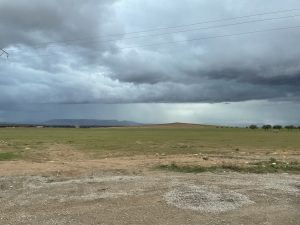
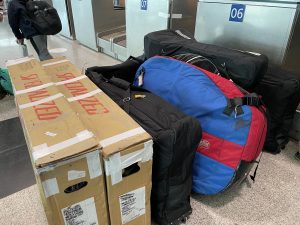
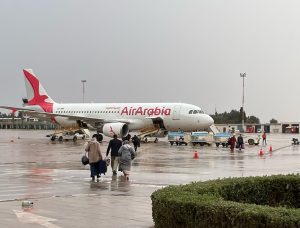


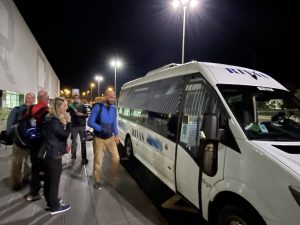 On the TV screens on the plane we listened to a Muslim prayer before taking off….so I had that going for me!!
On the TV screens on the plane we listened to a Muslim prayer before taking off….so I had that going for me!!
So we have left Morocco and we have gathered in Almeria and met up with 2 new riders.

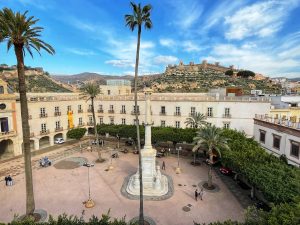
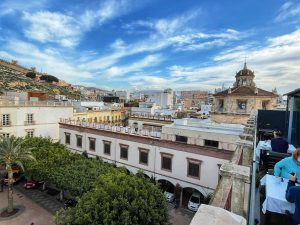
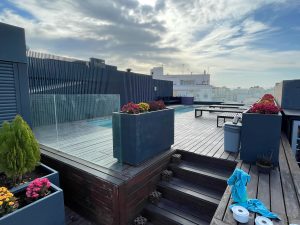
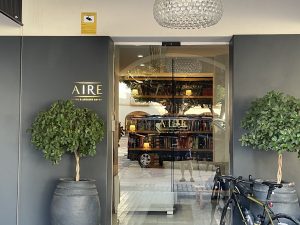
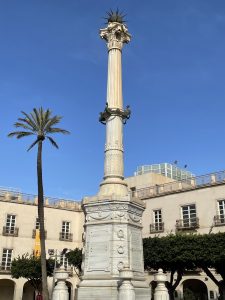
Almeria is a lovely historic town. With two fantastic castles overlooking a town squeezed by the Sierra Nevada mountains and Mediterranean it made an excellent place to start the next leg of the ride. Two new riders joined us to ride the next stage of the Odyssey.
A beautiful ride on perfectly smooth roads today which started with our only ocean side ride as we skirted the Mediterranean Gulf of Almeria West. Spanish seaside towns can be overbuilt and the short section we enjoyed was lovely for its beach and cliff views however once we turned inland we quickly understood why the Sierra Nevada is famed cycling territory. We rode the Junta de Andalucia, from sea to snow capped mountains!. With perfect roads, little traffic and steady climbs it was magnificent riding. We breached the first line of the Sierra Nevada with a mid morning steady 15km climb with super windy headwinds that strengthened as the day progressed!, and dropped into its main valley which we will traverse for the next three days. Tonight we are staying and eating local in Lujar de Andarax, a lovely town with a diverse history.

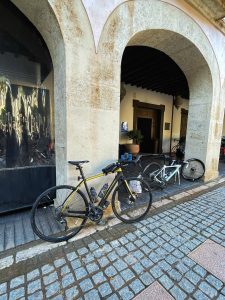
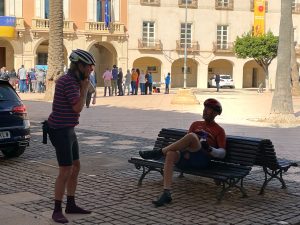
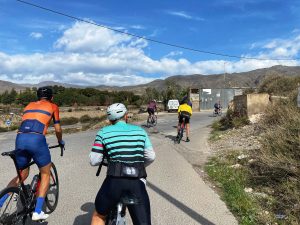 said Good-bye to guide Stephane, sorry to see him leave
said Good-bye to guide Stephane, sorry to see him leave 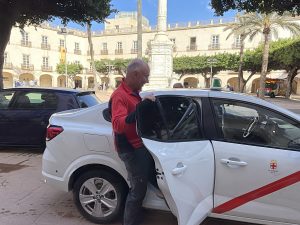
Greenhouse technology, Spanish style…not quite up to our level!!, just canvas and burlap!

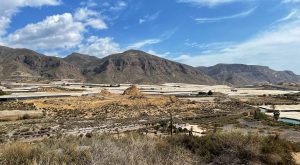

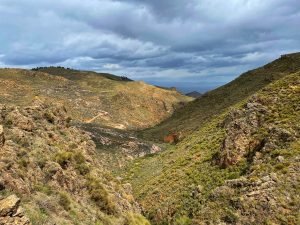
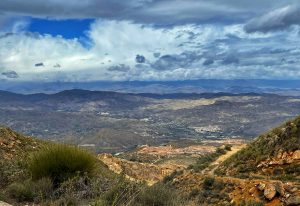
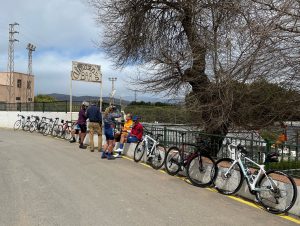
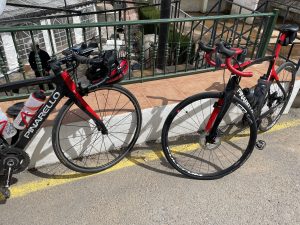
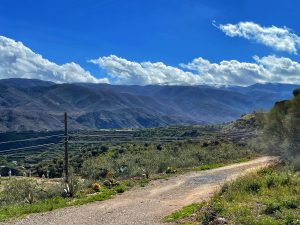
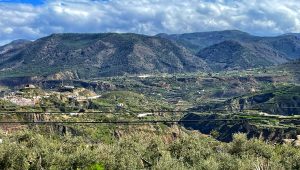
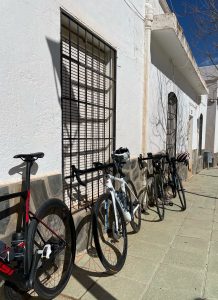

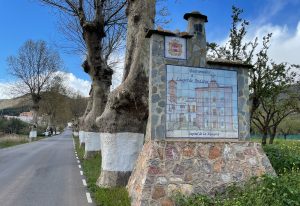
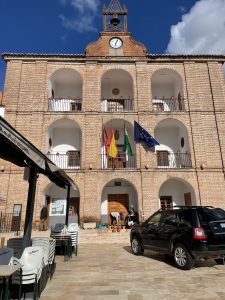
Almeria
Almeria was, until recently, the last well-known of Andalucia’s provincial capitals. These days, due to the growing popularity of the province’s beaches, especially nearby Cabo de Gata and its natural park, more visitors are getting to know Andalucia’s fastest-growing major city. It remains, for now at least, largely uncommercialised – Andalucia before the tourists arrived – and is known as a ‘rough diamond’, a relaxed place with surprisingly good nightlife.
Almeria is the most African of Andalucia’s port cities (Huelva, Cadiz, Malaga) – it is sometimes called ‘an extension of Morocco’ and in Arab times, Almeria was the richest and most important port in Andalucia
The Alcazaba of Almeria
The Alcazaba was founded during the first half of the 10th century by Cordoban Caliph Abd al-Rahman III, who also built Medina Azahara. Construction on the fortress was started in 955AD, and Almeria subsequently became an important trading port city with the Mediterranean and North Africa. Then Almeria gained taifa (independent city state) status, and its prosperity peaked – trading goods included silk, woven from thread made by silkworms in the Alpujarra, olive oil, ceramics and gold coins. The palace in the Alcazaba would have been resplendent. After the taifan era, the city passed to the Almoravids.
At this period in the history of Almeria, such was the city’s status and importance within Al-Andalus that the saying went: “When Almeria was Almeria, Granada was but its farm.”
Two centuries after being built, having withstood two sieges, the Alcazaba was captured by Catholic King Alfonso VII in 1147, allied with the Italian city states of Genoa and Pisa. Alfonso held it for just a decade. During this time, many trading ties were severed, and the fortunes of the city suffered. Almeria never recovered from this sudden and dramatic economic – and architectural – collapse.
The Almohads (who also built the Giralda and Torre del Oro in Seville) recovered the city in 1157, ruling until 1228. Afterwards came the Nasrids, who built the Alhambra, ruling Almeria from Granada. In 1489, in the twilight years of the Moorish era, Almeria was once again captured by Catholic monarchs – this time, Isabella and Ferdinand. At this point, the fortress’s role became more military, and the castle at the northern end was built. Once Granada was taken in 1492, another chapter began for Andalucia.
Overlooked by foreboding hills and surrounded by vineyards, Laujar de Andarax is the ‘capital’ of the Almería Alpujarras. It was here that Boabdil, the last emir of Granada, settled briefly after losing Granada, and where Aben Humeya, the leader of the doomed 1568–70 morisco (Christians converted from Islam) uprising, had his main base. These days, Laujar is a laid-back wine town with a handsome town hall and a formidable 17th-century church, the towering Iglesia de la Encarnación.
The view from the terrace of my room 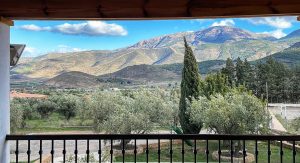
A wonderful dinner of local cuisine and local wine put a great end to a super challenging ride!…More of the same tomorrow!.
The Sierra Nevada is Spain’s largest natural park – a vast land of icy mountains and rugged terrain stretching for 850 square kilometres. It’s home to Europe’s most southerly ski resort, some of Spain’s highest mountains and most importantly Europe’s highest paved road – an incredible cycle!
The spectacular Alpujarra region of the Sierra Nevada inspired Gerald Brenan to write “South from Granada”, his most famous book about Spain. It’s a cluster of tiny whitewashed villages, spread along the park’s southern extremity like snowflakes that won’t melt. They’re all ridiculously beautiful, but Capileira, Bubión, Trevélez and Pampaniera are the best and we will ride through, stay in or lunch in all of them.

One thought on “Wizard of Oz Revisited”
You are a legend Charles! Well done and survived!!
Comments are closed.